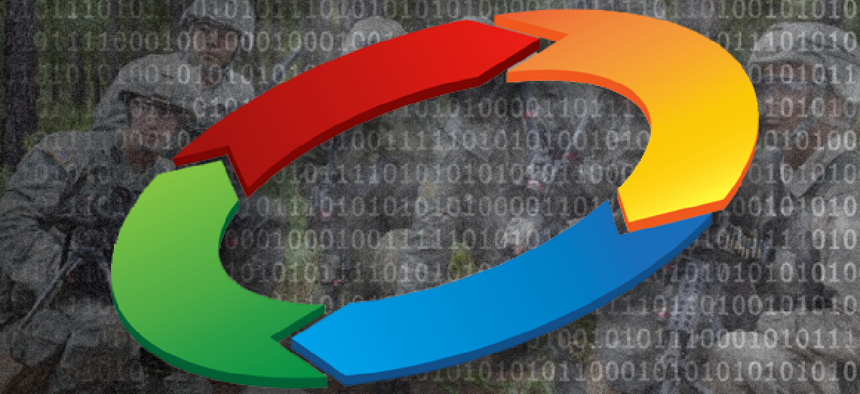The circle of life for DOD IT


Connecting state and local government leaders
Early project planning, establishment of clear requirements and realistic expectations and continual customer engagement are the hallmarks of a holistic lifecycle software support that saves big dollars.
When it comes to providing full lifecycle support for Defense Department software systems, we’ve found that the key to maximizing the government’s IT investment is a holistic approach that emphasizes clarity and customer engagement.
The three factors drive the size of the government’s IT investment: cost, schedule and performance. Software investment starts with finding the right balance between these three legs of the investment triangle. Given the established budget, can we meet the requirements within the specified timeframe? Changes in any one of these factors will invariably have an impact on the other two.
There are four primary stages of lifecycle support for DOD software programs.
1. Prioritizing customer needs. Effective IT lifecycle support starts with a thorough understanding of what the customer, or the commander in the field, needs to complete the mission. There are three types of needs:
- Mission critical – must-have upgrades that are often security or information assurance related;
- Mission essential – upgrades that have an operational impact on the mission; and
- Mission enhancement – upgrades that would enhance the usability of the software but don’t fit into the other two categories.
Prioritizing needs of field commanders into these three categories helps develop a clear picture of software performance requirements – essentially, differentiating between “needs” and “wants.”
2. Writing the technical scope. A detailed technical scope breaks down what the customer is asking for, addressing either anomalies (problems that need to be corrected) or enhancements (things that improve performance). At this point, it’s critically important to compare the technical scope to the available budget and desired schedule. That is the only way to determine whether a proposed system can perform up to the level required by field commanders within the budget and time constraints.
3. Project planning and monitoring. Software development or sustainment requires continuous planning. Project planning for a baseline evaluates the attributes of work products related to tasks, so that we can align resources needed to develop an iterative software release or provide sustainment of an existing software baseline. Another essential part of project planning is creating the project schedule, which requires extensive interaction with stakeholders and review of historical information related to previous efforts.
We start with an overarching five-year plan that keeps investment goals and objectives in sync with changing organizational priorities and performance needs. When we get down to the one-year timeframe, we move into the execution phase. This phase includes coordination with the engineering and development team – which assesses requirements and writes software code – and the support team, which addresses configuration management, information assurance, independent verification and validation and certification and accreditation.
4. Measurement and analysis. The fourth stage of holistic lifecycle software support is measurement and analysis so that the three legs of the IT investment triangle are kept in balance. Are we on schedule? Are there cost overruns (or cost savings)? Do we need to drop any software requirements that are impeding performance or can we add requirements to enhance the system? To maintain a holistic perspective, measurement and analysis must address both technical and cost considerations. Earned value metrics are used to gauge the time and cost performance of the project and to predict the final project duration and cost.
Constantly reviewing risk goes hand in hand with developing and maintaining a thorough understanding of customer needs. When new risks are identified, the challenge is to accept, resolve or mitigate those risks. Risk resolution means finding a way to eliminate that risk; risk mitigation means coming up with a workaround solution that minimizes the impact of that particular risk.
After software is fielded, the lifecycle engineering and support teams are responsible for performance enhancements and security fixes that extend to the software’s end-of-life and ensure the system maintains a secure posture. Staying engaged with the customer’s changing needs helps maintain a clear picture of new requirements that will have to be addressed in the next software release. Then the sustainment cycle starts all over again.
In the long run, early project planning, clear requirements and realistic expectations and continual customer engagement are the hallmarks of holistic lifecycle software support that saves big dollars.




